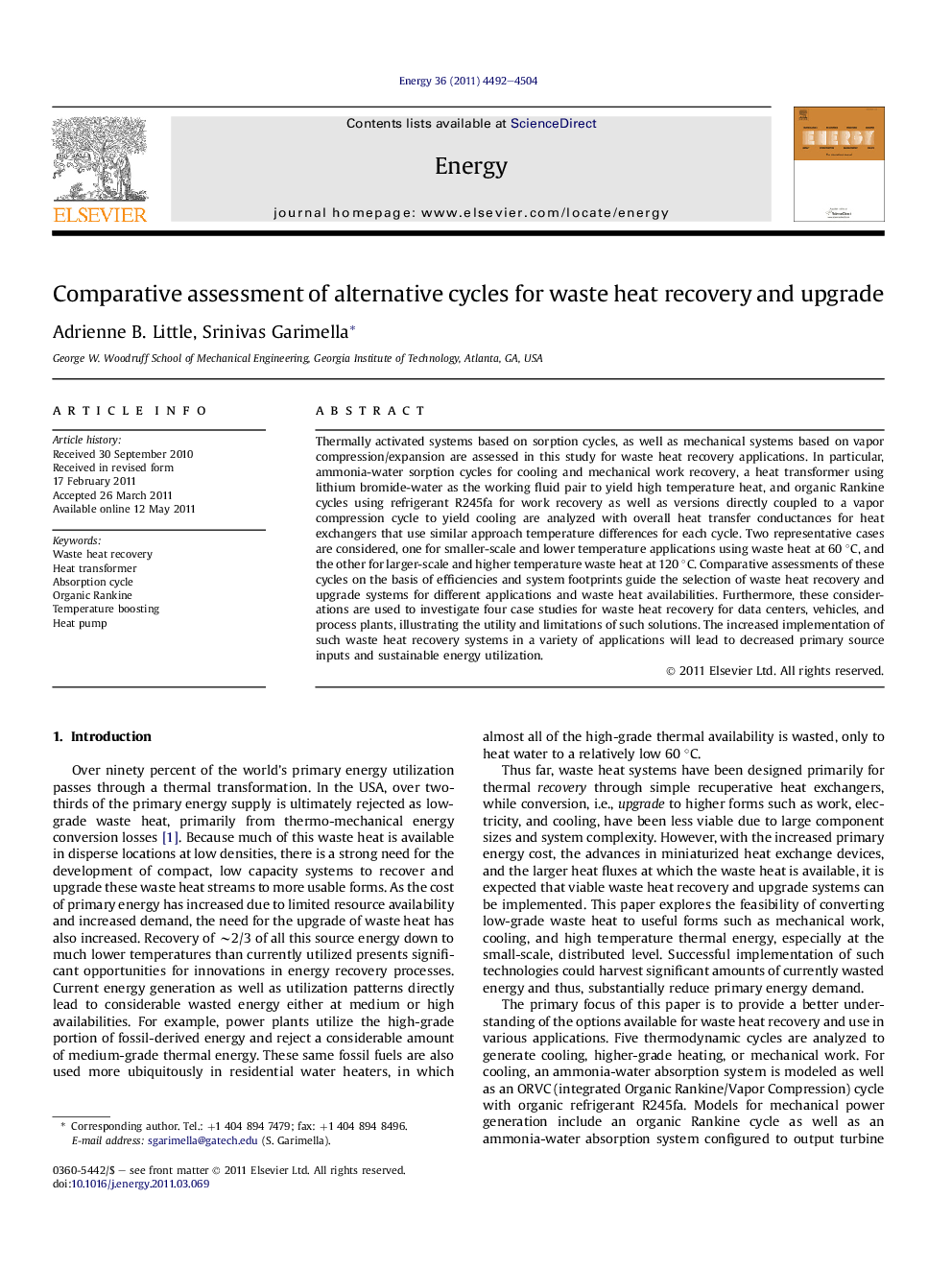| کد مقاله | کد نشریه | سال انتشار | مقاله انگلیسی | نسخه تمام متن |
|---|---|---|---|---|
| 1734209 | 1016153 | 2011 | 13 صفحه PDF | دانلود رایگان |

Thermally activated systems based on sorption cycles, as well as mechanical systems based on vapor compression/expansion are assessed in this study for waste heat recovery applications. In particular, ammonia-water sorption cycles for cooling and mechanical work recovery, a heat transformer using lithium bromide-water as the working fluid pair to yield high temperature heat, and organic Rankine cycles using refrigerant R245fa for work recovery as well as versions directly coupled to a vapor compression cycle to yield cooling are analyzed with overall heat transfer conductances for heat exchangers that use similar approach temperature differences for each cycle. Two representative cases are considered, one for smaller-scale and lower temperature applications using waste heat at 60 °C, and the other for larger-scale and higher temperature waste heat at 120 °C. Comparative assessments of these cycles on the basis of efficiencies and system footprints guide the selection of waste heat recovery and upgrade systems for different applications and waste heat availabilities. Furthermore, these considerations are used to investigate four case studies for waste heat recovery for data centers, vehicles, and process plants, illustrating the utility and limitations of such solutions. The increased implementation of such waste heat recovery systems in a variety of applications will lead to decreased primary source inputs and sustainable energy utilization.
► Sorption and mechanical pathways for the conversion of waste heat streams to work, cooling, and temperature boosting were investigated.
► Waste heat sources including 300 W of energy at 60°C and 1 kW of energy at 120 °C were analyzed.
► Up to about seventy percent of the input waste heat can be converted to cooling.
► Up to about ten percent can be converted to work.
► Up to about 47 percent can be upgraded to a higher temperature.
Journal: Energy - Volume 36, Issue 7, July 2011, Pages 4492–4504